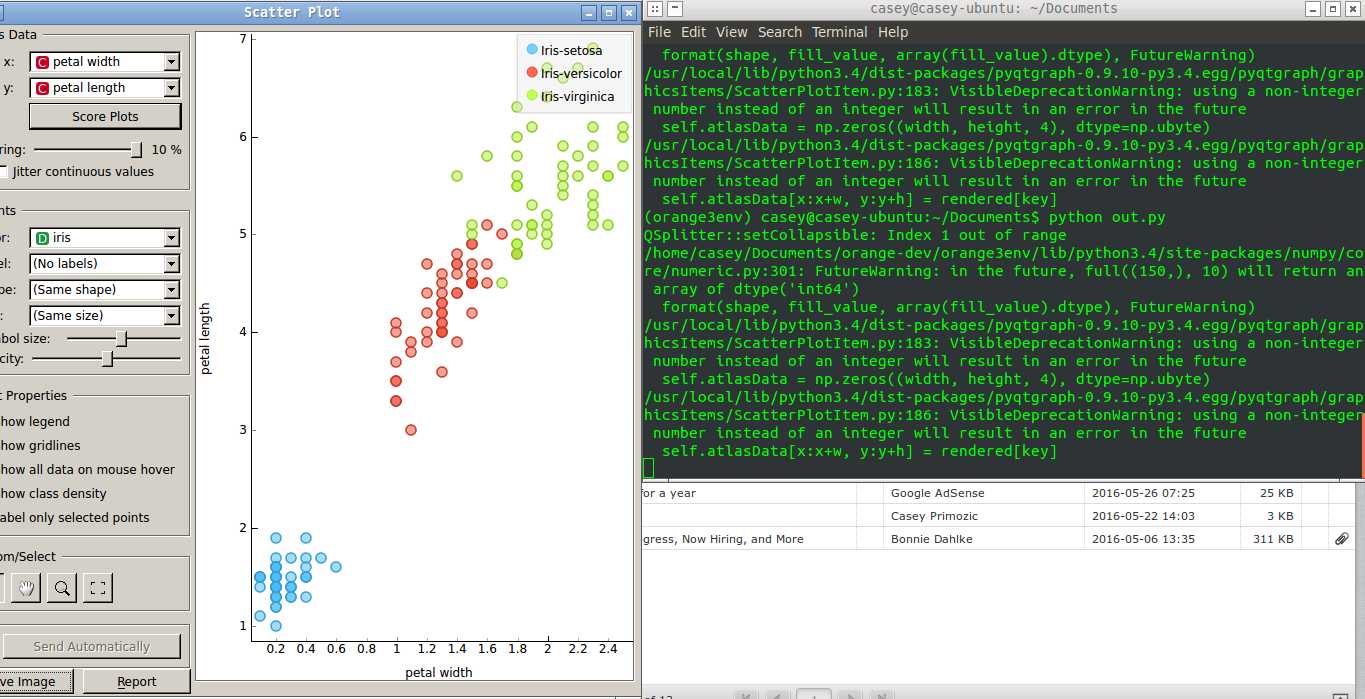Today and yesterday I worked to change the code generator to better fit with the design set forth in emails between @Pelonza, @kernc. and myself.
The entire class-based code generation system was abandoned in favor of a simple, linear order of execution. Each widget's code is evaluated in order with results being stored in a variable consisting of the widget's unique name and the channel on which it is output. These are then read into other widgets' inputs automatically at runtime.
Instead of going back to an earlier commit or starting over from scratch, I opted to use the existing code generator and simply make changes to it to make it functional for the new style of generation. This consisted of removing some subgenerators and replacing them with different ones. These new generators mostly focus on positionally inserting code relative to the body function rather than constructing a class as they used to do.
After making those changes to the code generator and updating the code generator initiator in owfile, I create a code gen initiator for owscatterplot that creates a QtApplication, loads the data from the file, and displays it.
Here is an example of the current output code: https://ameo.link/u/bin/2l0
Future work will consist of cleaning up generated code, optimizing the generator, and creating generator initiators for other widgets.

┆Issue is synchronized with this Asana task